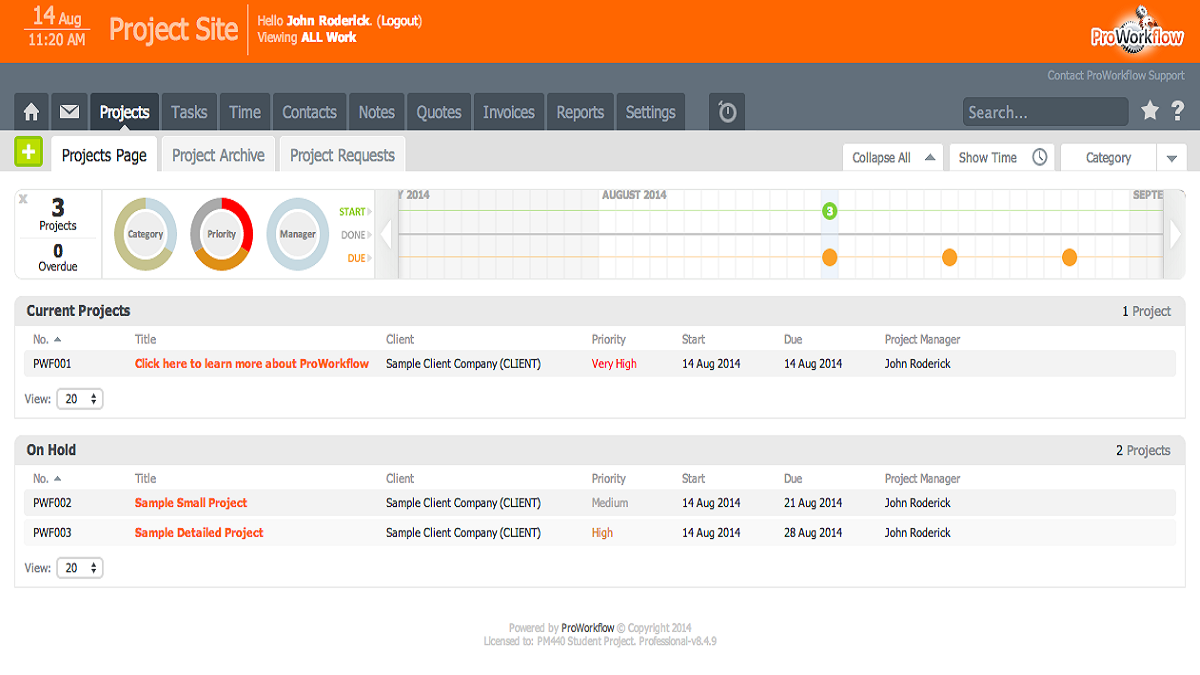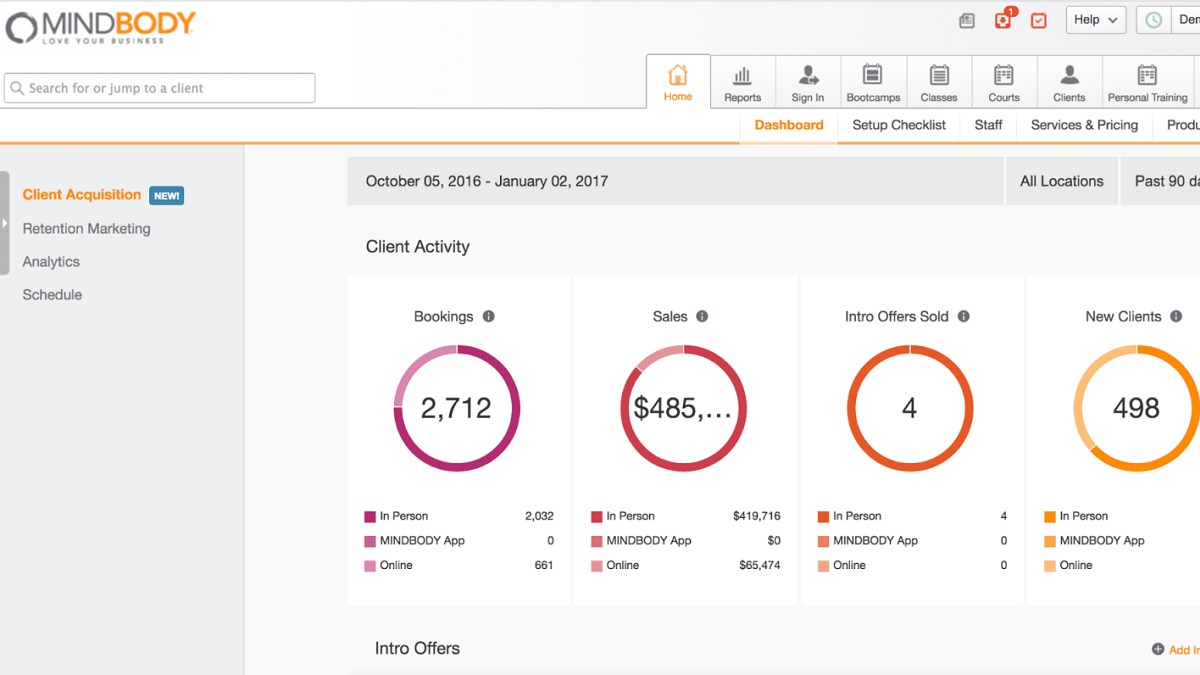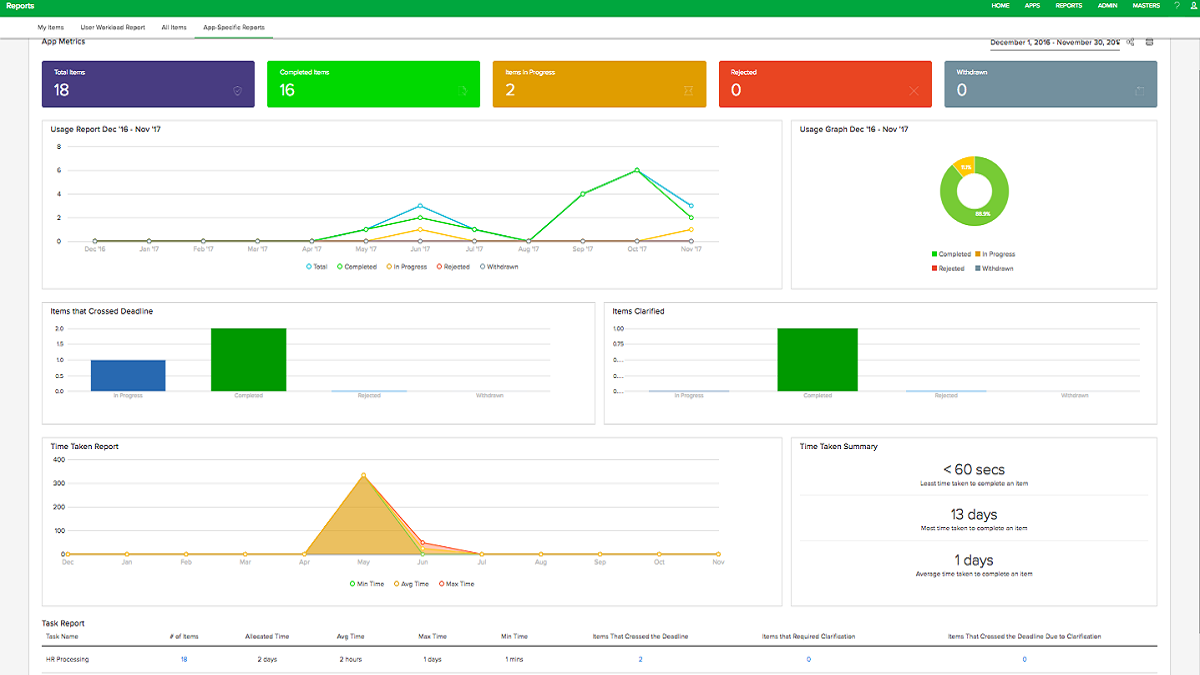Your business can only do so many manual processes before you realize the inefficiencies they bring. Perhaps your employees are spending too much time on administrative and operational issues instead of their actual tasks. Maybe you’re still using the spreadsheet system which has the potential to become nightmarish when tracking the status of different projects.
It also affects how your information is being organized. Because you’re using different software for different functions, silos are being created. Your employees might have trouble finding particular information that they know is ‘somewhere’ in your database. In turn, they go around digging through spreadsheets and company-related emails.
So what could be done to alleviate all these? What you need is a tool that could automate tasks, manage workflow, and handle information, and integrate with your existing systems. This is where business management software comes in.
What is Business Management Software?
Business management software refers to computer systems designed for reviewing the organizations’ corporate performance that helps them determine the best practices for success. This type of solution efficiently collects, organizes, and analyzes information as well as automates a series of business operations. This helps increase your overall productivity and cut down on time in doing some time-consuming everyday tasks.
While diverse in its offerings, business management software contains some basic features. First, it must provide you with an avenue for creating business rule logic. Next, it should be able to capture business processes. The third is its ability to support integration with other tools, especially for handling data.
What does business management software do?
Business management software typically features visual workflow maps, email integration, document management, and business activity tracking, among others. This system also supports the collaboration between business users and the IT teams, allowing them to make essential business decisions together.
Clearly defining company-scale processes and then monitoring each of them is another of the business management software’s main functions. With this, users will be able to create digital applications tailored for various steps of their process. They can even automate some of them, accelerating the entire workflow of the company. As for tracking the processes, this can be done either by looking at the big picture or looking at each of them in detail.
Who does business management software help?
Business management software is an umbrella term for tools that allow companies to create, analyze, and update their processes. This means that its ideal users are organizations that want to optimize and streamline their processes, including the following:
- Mid-sized companies that want to model and enhance their business processes.
- Large organizations and multinational enterprises will need a system that can automate and streamline their processes to improve their effectiveness and efficiency.

Proworkflow offers tools for planning, tracking, and collaboration that help improve the efficiency of organizations.
List of Best Business Management Software
- ProWorkflow. A feature-packed system designed to ensure that projects are done effectively and delivered on time. It has tools for planning, tracking, and collaboration, which all organization members can use to ensure that everyone remains productive and performs their job effectively. The platform can be accessed on a mobile phone, allowing all users to be productive anytime, anywhere. You can try the tool at no risk through the free trial being offered by the vendor. If it fits your requirements, you can upgrade to a paid plan. ProWorkflow offers three pricing packages, starting at $10/month.
- Wrike. A tool designed to help co-located and distributed teams manage their projects. It sports an intuitive and user-friendly interface and allows users to customize their workflows. Its time management functionalities can be considered as its strength. Through its time tracking options and mapping tools, you can manage productive hours at a granular level. A free trial is available so you have a chance to try and see whether the tool fits your business with no price involved.
- Workfront. Previously known as AtTask, it’s a very scalable and comprehensive solution for managing your projects, work, and many more. It gives users a 360-degree view of their operations so they can easily deteirmine trends and issues and take the necessary actions. All teams, irrespective of size and methodologies they follow, can use and adopt it. There’s no free trial and the price for all the four plans available can only be acquired by asking the vendor for a quote.
- monday.com. A leading communication and collaboration platform for teams in the market. With this solution, users can enjoy a well-organized, collaboration-first, and neat interface while ensuring that team members work seamlessly and effectively together and that projects are delivered on time. One of its distinctive features is its advanced scheduling capability, which can be used in managing both the entire project progress as well as specific tasks given to staff. It is also very user-friendly. You can easily adapt to the tool even with no preparation or training. This solution is also reasonably priced. Its pricing plans start at $39 per month, billed annually. A free trial is also available.
- Mindbody. A software specifically designed to help businesses in the health and wellness industry to effectively manage their business and marketing operations. With this solution, several business processes can be automated, such as payroll processing, payment collection, and confirmation. In addition, the platform sports user-friendly and effective tools for ensuring that the business stays in touch with customers and provide them with great deals, such as a custom gift card. They offer three enterprise pricing plans starting at $129/month. No free trial is available.

Mindbody is one of the more niche business management solutions that specializes in wellness services.
- Orchestly. A member of the well-known Zoho family, this software centralizes business management processes and offers tools to map and facilitate pipelines. It brings together various functionalities into one platform, including collaboration, scheduling, and task boards. It’s also a code-free solution that uses a graphical user interface to handle the visualization of business data and reports. Thanks to this, even new users won’t have a hard time adjusting to and mastering the software. Likewise, custom code is useful for meeting the automation needs of organizations that are not available via the default features. Orchestly is available for annual and monthly subscriptions.
- KISSFLOW. A cloud-hosted solution that simplifies the process of designing, creating, and customizing business apps. It allows the people who best understand problems to create workflows most suited to their needs. The system comes with about 50 integrated business apps, including mileage reimbursement, purchase orders, vendor payment, and employee onboarding. Users can also further customize these apps according to their preferences. Plus, they always have the option of creating one from scratch themselves. KISSFLOW offers two pricing plans, which start at $9 per user/month.
- Kriya. As an all-in-one solution, Kriya offers teams with a comprehensive suite of tools designed to help streamline workflow and processes. Its low-code design infrastructure makes automation easier and faster. Designed for businesses of any size, Kriya can be accessed through any device, allowing you to track workflows and updates on-the-go. Additionally, it offers an integrated document management system. Kriya is offered on a by-quote basis, allowing for better service customization.
- Studio Creatio Enterprise. This platform aids companies in accelerating their business processes through low-code solutions, which remove complexities for specific business needs. It’s ideal for large and mid-sized companies, as well as software developers, and system integrators. Creatio Studio also helps expedite routine operations especially those related to intelligent technologies. It leverages the preconfigured solutions for marketing, sales, and services to create low-code but fully functional custom apps. The pricing depends on the module you want to avail of. It ranges from $25 per user/month to $850 per license.
- Nintex. An end-to-end process management tool that provides different types of businesses with workflow automation solutions. It also helps automates the processes of today’s top collaboration platforms, content management systems, and workflow solutions. Nintex enables users to automate work with content regardless of where they are and what day and time it is. The system offers a flexible pricing scheme which starts at $625/month.
- Comidor. A Low-code BPM software that provides organizations with a comprehensive suite of tools to streamline and optimize their business processes. It offers features for process modeling, automation, low-code application development, collaboration, and analytics, allowing businesses to design, execute, monitor, and continuously improve their workflows and processes. Comidor empowers users to enhance efficiency, reduce operational costs, and achieve better control over their business processes, ultimately leading to improved productivity and agility within the organization. Pricing for Comidor is user-role-centric, with rates beginning at just $9 per user per month.
Features of Business Management Software
As mentioned earlier, business management software is practically a collection of different tools that help companies analyze and optimize their processes. While the system offers a variety of tools from its arsenal, the most essential ones include:
Workflow map
One of the key features of this type of platform is the ability to visualize business processes through a series of steps to create a workflow. Thanks to this, conceptualizing is a lot easier and when the need for modifying various aspects arises, it’s easy to do so. Workflow maps are typically visual, interactive, and most easily implemented through drag-and-drop editors. Kanban and Scrum are two of the most common workflow mapping tools.
Email Integration
There’s a lot of collaboration and communication out there that some think external emails are a thing of the past. They’re not. Researches indicate that email is still a major part of businesses and thus, your business management must cover them too. After all, this is important for connecting with clients, suppliers, and other stakeholders from inside and outside the company.
Document sharing and management
Documents are ever-present in virtually any type of business, most likely in yours too. This makes the proper tool for sharing, storing, and updating documents an essential feature. While not all business management software inherently offers them, good ones will at least provide seamless integration with the services that do. These include Box, Google Drive, and Dropbox.
Invoicing and billing
The major goal of businesses, one way or another, is to generate revenue. Because of this, tools for handling processes involving finances are key features of business management software. A lot of software from this category provides built-in invoicing and billing capabilities to make finance-related processes smoother.
Types of Business Management Software
Business management software can be classified into three main types, namely:
- Vertical frameworks. This usually comes with ready-made templates which are configurable and easy to deploy. Vertical frameworks in business management typically deal with a particular set of coordinated tasks.
- Horizontal frameworks. This type of business management software concerns itself mostly with the design and development aspects. Taking advantage of modern technology and reusability is its main focus.
- Full-service business management. This is the most comprehensive among the three types and is consists mainly of five essential components. These are process design and modeling, workflow engine, process discovery and scoping, business rules engine, and simulation.
Benefits of Business Management Software
The selection for big platforms such as business management software must be a carefully thought-out process. That’s due to the wide range of effects they’ll have on businesses. When played right, business management systems can provide your organization with the following benefits:
Increase in effectiveness
By boosting various capabilities such as faster and better decision making, an increase in efficiency can be immediately observed. That’s because you’re given a fresh perspective on processes that helps determine and mitigate inefficiencies throughout your organization. With this, your customer experience becomes more satisfying, managing issues is easier, and the strategies you execute are better.
Business management software addresses various key issues that companies face such as the inability to monitor progress and manual labor. It can enhance the effectiveness of how your company operates in general. This makes it easier to align your business efforts with your company goals.
Enhanced agility
These days, the corporate landscape is a fierce and competitive field which is why agility is becoming increasingly important. There might be a time when you must make changes to your processes. Maybe you’ll have to accommodate new business opportunities or comply with new international or national regulations. A good business management software is an ideal tool to help you alter your current processes for the better. This way, your organization remains adaptable, flexible and most of all, competitive.
Factors to Consider when Buying Business Management Software
Even if you’re convinced of the positive effects that a business management software can bring to your company, you must still not be hasty. Because of how diverse this type of platform could be, selecting the one ideal for you won’t be as simple as you might think. However, there are some factors that won’t hurt for you to consider when shopping for a business management platform. Here are some of them.
Problems
The issues in your current processes should be one of your main considerations when choosing a business management software. Do you need to automate various admin operations? Are you lacking the means to track your processes? Or perhaps, you need a platform that can integrate with a system you’ve been using for so long. When you have figured out which problems you’re trying to solve, then ensuring that the software you choose solves them comes next.
Deployment options
Do you need the platform to run on your own server and hardware? If so, does the software you’re considering support such a deployment option? Most solutions are more geared toward cloud deployment since more organizations are also using them. This has been a trend for the past few years which doesn’t show the sign of stopping. Scalability, maintenance, security, upgrades, and other factors make the cloud a better solution. However, you must still assess the risk of your data being stored outside your premises or how much time and effort will be consumed by the migration process. Consider your organization’s situation first before choosing.
Vendor support
With business management software, your transaction with the vendor and its personnel won’t be a one-time event. This is especially true with the customer support team whom you’ll probably be talking with over and over again. You’ll want the people on the other line to be pleasant when discussing issues with you. They should be experienced, trained, and knowledgeable too. You must also ensure that you’re okay with their other customer support methods such as ticket and email reporting.
Your budget
Last but not least is how much your company is willing to invest in business management software. Making sure that you can afford the product is a no-brainer. However, you must not fall into the trap of considering only the immediate purchase cost and not the cost of ownership. Also, make it clear that no hidden fee will come back haunting you after the implementation process. Moreover, consider other future scenarios. For instance, are there add-ons that you might need later? Do they have premium support that you’ll most likely need?
The Latest Business Management Trends
Throughout the rise and development of business management solutions, various trends seem to stick. These are some of them.
Integration of real-time predictive analytics
The majority of successful companies focus on managing their businesses through real-time predictive analytics. This is mainly because it’s a beneficial technology to implement. It gives actionable insights that open the opportunity to further optimize and streamline their business processes.
Widespread use of smart business operations
Smart business operations is an effective technique for improving business operations since it allows your processes to become aware of the situation. This means that from a range of work interactions, your business processes would be able to learn and understand various contexts that help them adapt accordingly to their environment. In turn, managers become more situationally aware and proactive; helpful traits in making smarter and faster decisions.
Increased adoption rate of extreme collaboration
Communication and collaboration are important aspects of practically any type of business. However, not all colleagues are working together inside a single office space. The remote employment model is becoming more popular among businesses around the globe. This makes the process of working harmoniously more challenging because of the distance. However, the adoption of extreme collaboration, which means that employees can create and maintain relationships across organizational and geographic boundaries, solves this issue.
Potential Issues with Business Management Software
While a beneficial solution, implementing business management software might not be as easy as you think. There will be friction in the organization since it practically affects every aspect of the organization. Some of the potential problems with business management software include:
Difficulty in gaining sponsorship. You might have a hard time convincing the higher-ups to implement business management software. Some executives or managers aren’t fully convinced that investing in this type of solution is beneficial to the company. In fact, around 50% of mid-sized to large businesses’ don’t accept something new and thus, most of their initiatives fail.
Poor change management. Business management initiatives can be easily delayed or halted if business change management isn’t handled right. Therefore, it’s imperative for those wanting to implement this solution to overcome this type of challenge. Usually, the management or the HR units will be the one to handle this by conducting learning and development courses. This will help make the executives realize the importance of flexible change management.
Choosing the Ideal Business Management Software is Not Easy
A few years back, choosing business management software is easier because there’s only a dozen of options available. It’s not the case today. However, this isn’t necessarily a bad thing at all since the more options there are, the tighter the competition is. Therefore, you can rest assured that each of them is trying their best to succeed in the industry.
Most of the products you’ll find for business management is capable of transforming your organization into a better version of itself. However, they do it in a variety of ways such as focusing on automation, visual workflows, task monitoring, etc. That’s why just looking at the top solutions might not be as reassuring as you might think.
You must still factor in the unique quality and needs of your business. From there, you’ll have to figure out which features you need exactly, how much you can spend on it, and more. Only after conducting your extensive research must you confidently go with your choice.


